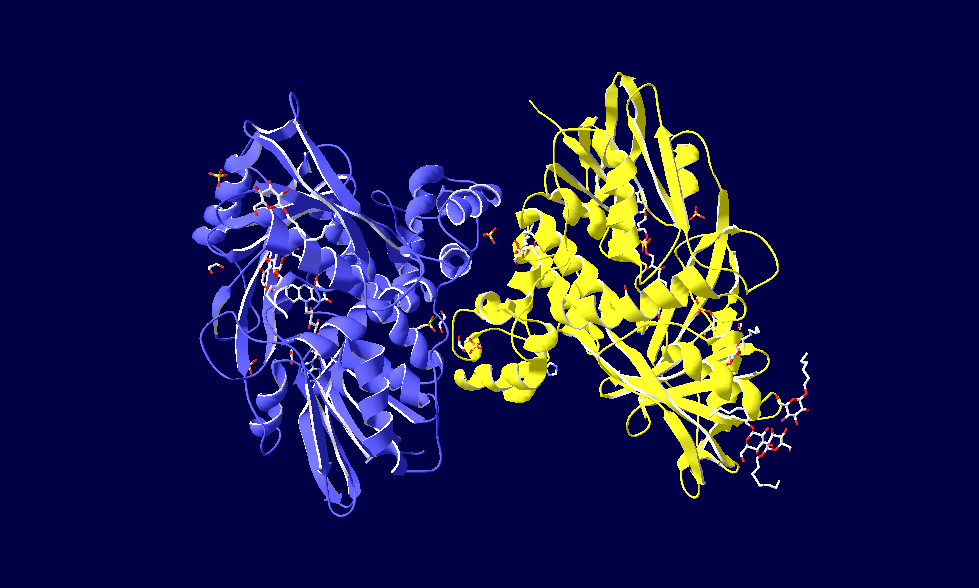Glycerol-3-Phosphate Dehydrogenase
From Proteopedia
Glycerol 3-Phosphate Dehydrogenase
Contents |
Introduction
Glycerol 3-Phosphate Dehydrogenase (GlpD) is an oxidoreductase enzyme which catalyze the reaction of transfer of electrons between molecules. GlpD is a membrane associated enzyme that is involved in glycerol metabolism, ubiquinone and glyceroneogenesis in E. coli. In Ecoli, many newly discovered structures of GlpD are being used to transfer electrons into the respiratory pathway and also for the metabolism of glycerol into its precursors for other pathways. The GlpD enzyme contains a flavin active site which plays a major role in the respiratory electron transport chain and in cellular energy requirements.
Structure
GlpD consists of two chains; α and β.
Function
GlpD is associated in the intracellular membrane of E. coli and in the inner-mitochondrial membrane of eukaryotes. GlpD in E. Coli catalyzes the reaction and oxidizes glycerol 3-phosphate to dihydroxyacetone phosphate in the glycerol metabolic pathway. Upon the oxidation of glycerol 3-phosphate, falvin adenine dinucleotide (FAD) reduces to FADH2, passing on electrons to Ubiquinone (UQ). UQ then reduces to UQH2 which allows for electrons to pass to nitrate or oxygen.
Metabolism
Diseases
| Please do NOT make changes to this Sandbox until after April 23, 2010. Sandboxes 151-200 are reserved until then for use by the Chemistry 307 class at UNBC taught by Prof. Andrea Gorrell. |
Proteopedia Page Contributors and Editors (what is this?)
Indu Toora, Michal Harel, Alexander Berchansky, David Canner, Andrea Gorrell, Andrew Rebeyka, Jaime Prilusky

